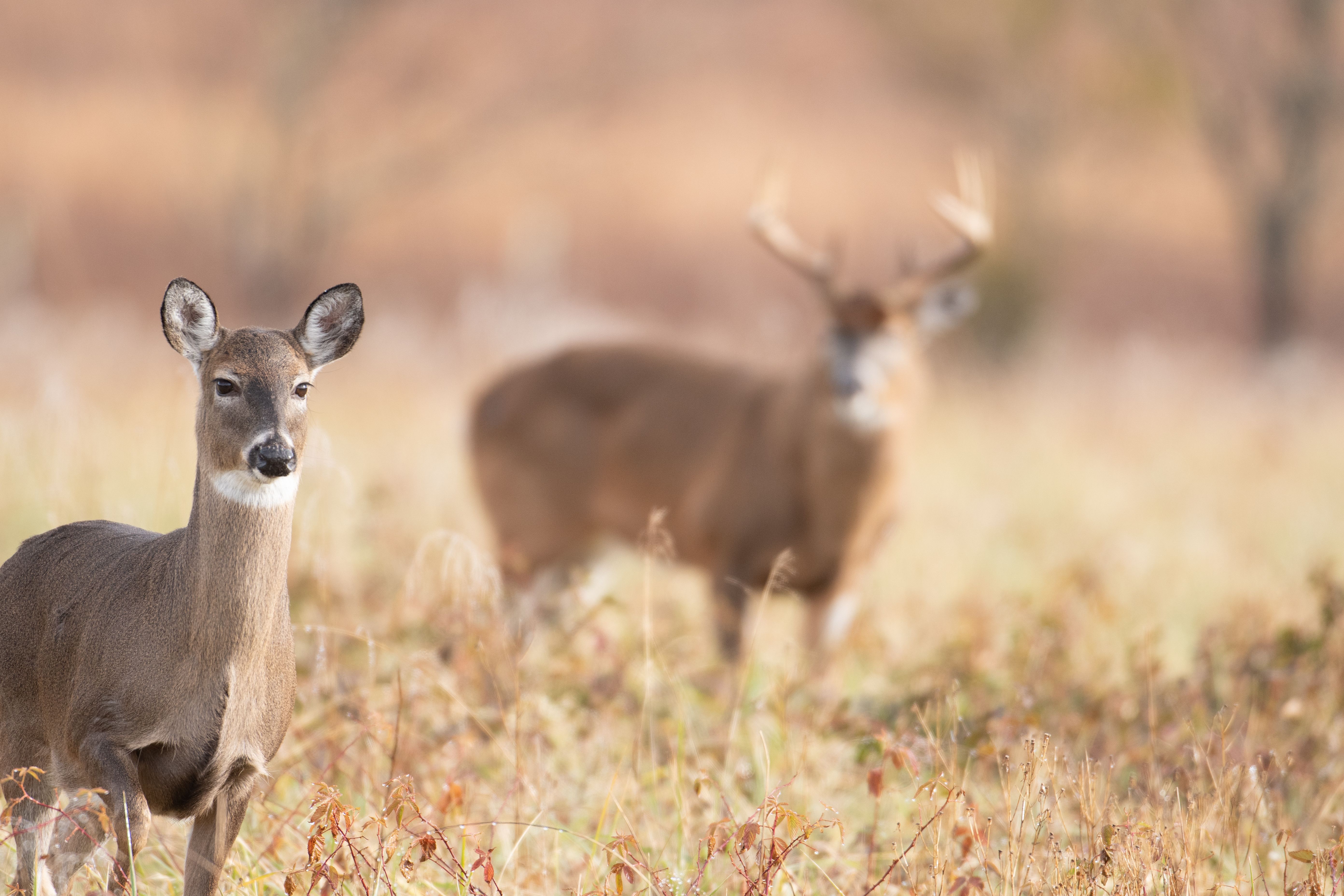For some of us, the season has been in full swing for months. For the rest of us, we have a short, jam-packed several weeks to land that monster buck on our trail cam.
Therefore, rather than twiddling our thumbs and waiting for that deer to make its way to our stand, let’s make use of our time. Let’s learn more about our game.

10 Whitetail Facts to Help You Hunt Better
Knowing the game you hunt helps you plan and hunt more successfully. So, here are ten interesting facts that every hunter and huntress should understand about whitetail deer. Use these insights to stalk your prey this season.
1. Whitetail Deer Are Very Agile
When tracking a deer through the woods or waiting in your tree stand, it might seem like a buck is there one minute – then gone the next.
That’s because whitetail deer are exceptionally agile. They can run 35-40 miles per hour and leap over obstacles 7-10 feet high.
A whitetail’s powerful legs and acute balance enable swift, nimble movements through dense forests and rugged terrain, allowing them to evade predators and navigate complex environments with remarkable ease.
2. They Feed Often
On average, a whitetail deer will feed about four times in a 24-hour window. These deer need to eat around eight pounds of vegetation per one hundred pounds of body weight per day.
For example, a whitetail that weighs 150 pounds can be seen feasting on 12 pounds of vegetation throughout the day!
3. They Can Live a Long Time
Do you feel like you keep seeing the same buck year after year on your trail cams? It’s possible!
Whitetails can live up to 20 years in the wild. Although only a few deer live to the age of ten, many live only two to three years.
4. Several Factors Contribute to Large Antlers
How does that buck’s antlers get so large? A 10-point buck doesn’t grow those on his own!
A whitetail’s large antlers result from three primary factors: nutritious food, increasing buck age, and good genes.
5. They Use Scent Glands for Identification
How does one deer recognize another deer? It’s all about the smell.
Whitetail deer have scent glands between the two parts of the hoof on all four feet, outside of each hind leg, and on the inside of each hind leg. This makes communication and identification a piece of cake for these animals.
6. Antlers Grow Fast
Adult buck antlers will start to grow around the last day of March and the first day of April. They usually grow at the rate of about a quarter-inch per day.
7. Does Can Have Multiple Fawns
Female deer, or does, can give birth to one to three young at a time. This usually happens in May or June.
8. They Rest During the Day
More often than not, whitetails are at rest or inactive during daylight hours, making them crepuscular animals.
The ideal times to see whitetail deer feeding are from before dawn until several hours later and again from late afternoon until dusk.
9. They Swim
Have you ever seen a deer swim? They can!
Whitetail deer can swim at a speed of up to 15 miles per hour.
10. A Whitetail’s Vision is Very Distinct
They can only see shades of yellow and blue, and they can view landscapes, forests, fields, etc., at a 310-degree radius. In other words, wear orange and don’t move.
Use these Whitetail Deer Facts and HuntWise to Tag Out This Season
Now that you know a little bit more about your favorite game, let’s make this season one to remember. Share your stories and success with us on the HuntWise app! We would love to celebrate our passion for the outdoors together.
If you haven’t downloaded the app yet, now’s the time! Try every feature free for a week.
Good luck, hunters, and shoot straight.
Content updated June 7, 2024.









